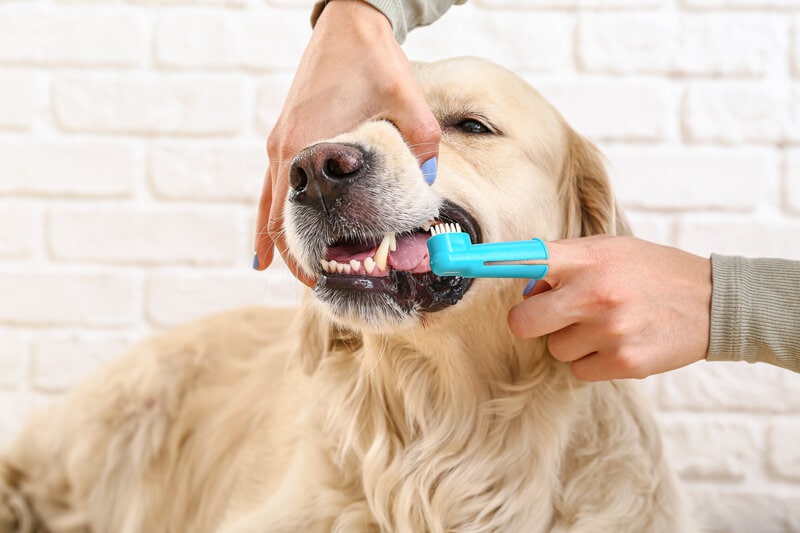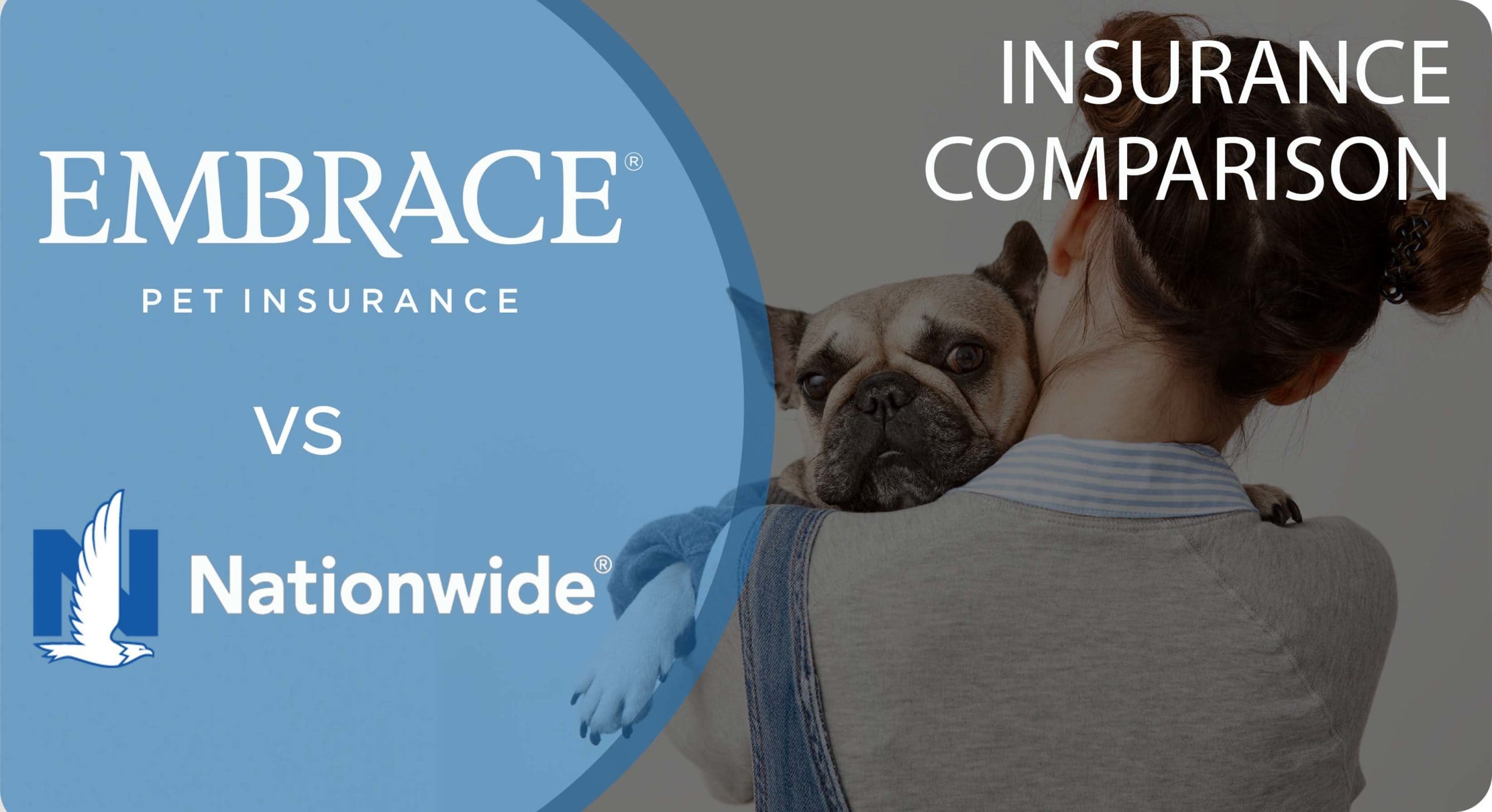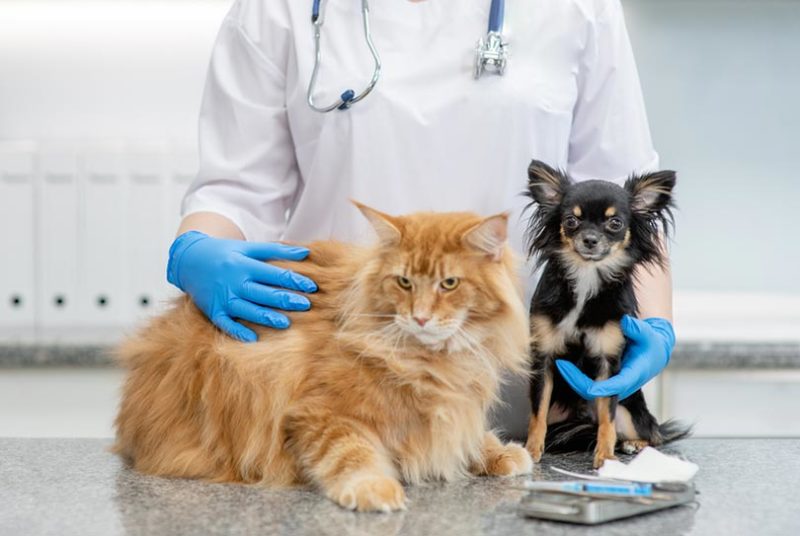What Does Pet Insurance Not Cover? 9 Common Exclusions (Vet Reviewed)
Updated on

When it comes to pet insurance, you are not short on options. Pet insurance has been around for over 100 years, with Claes Virgin creating the first pet policy in 1890. Claes Virgin, the founder of Länsförsäkrings Alliance, mainly focused on horses and livestock during its infancy. In 1924, the first dog insurance was created in Sweden, and pet insurance grew globally from there.
Pet insurance works much like human health insurance. There are deductibles, waiting periods, and so on. In this article, we will focus on what pet insurance does not cover so that you can be prepared and not be blindsided when you go to use it. Here are 9 common exclusions:
The 9 Most Common Exclusions Not Covered by Pet Insurance
1. Pre-existing Conditions
Ah, the dreaded “pre-existing” term. For humans, this type of exclusion was omitted in 2014, but for pets, it still stands. This is a common exclusion in pet insurance and one that could have a vague explanation, depending on the issue or condition. The main definition of this term means that any injury or illness that existed before coverage began will not be covered. For example, if your dog breaks his leg, and you decide to get coverage after the fact, anything pertaining to the broken leg will not be covered.
Some policies will cover a pre-existing condition if the injury or illness is deemed “curable” and has been symptom-free or cured within the last 12 months prior to obtaining the policy. Incurable conditions, such as allergies, diabetes, cancer, and other chronic conditions, can be covered after the waiting period. Some policies may never cover incurable conditions.
2. Waiting Periods
A waiting period is the amount of time you must wait for coverage to begin after signing up. Some policies have a 14-day waiting period, while others may have only a 2–3-day waiting period. All pet insurance policies have their own regulations here, but it’s important to know when shopping around.
Companion Protect1 is a fairly new pet insurance company that does not have a waiting period, and it’s the only one we know of that does not have one. Keep in mind, though, that they do review your pet’s medical records, which could take a few days, but coverage begins as soon as you enroll. However, you have to wait 6 months for annual wellness exams to be covered, but at least they cover annual wellness exams (many do not without paying extra).

3. Pregnancy/Birth
Very few pet insurance companies cover pregnancies or breeding. They will, however, cover emergency-type situations, such as an emergency C-section or some other birthing complication. This is not to say that all pet insurance companies deny coverage for pregnancies, but most do.
Trupanion pet insurance covers breeding and pregnancies but with certain stipulations. If this is something you want to be covered, you really need to double-check the policy before signing up, and if you’re not finding that information, feel free to call the insurance company directly and ask.
4. Death or Theft
This topic is certainly one that no one likes to discuss, but it’s important to know if the death or theft of your pet is covered. Regarding this situation, some cover death and theft, and some do not. Some may cover theft but not death, and death but not theft, but it really depends on the company. Some companies will pay for euthanasia if medically necessary, and some may pay for euthanasia but not the cremation or burial.
Theft policies are available with some companies that offer reimbursement if your stolen pet is a champion show dog or service dog.

5. Elective Procedures
First, let’s address elective procedures and what they are. Elective procedures are deemed medically unnecessary and will not be covered. Ear cropping, claw removal, spay/neuter, and tail docking are a few examples. Benign skin growths may also fall under this category. As far as spay/neuter, there are plans that may cover the procedure under a wellness plan, and that is usually an add-on coverage to your existing policy.
6. Age
Your pet’s age plays a role in whether or not they are eligible for coverage. Some companies will not enroll a pet at 14 years of age or older, and some deny coverage at 10 years of age. Some pet insurance companies do not have an age limit, but you may pay a higher premium for a senior pet. In the end, you’ll have to weigh the pros and cons of getting coverage for your senior pet and decide if it’s worth the expense.
7. Dental Cleanings
Routine dental cleanings are usually not covered under a pet insurance plan, but some dental procedures are, such as tooth extractions, especially if the tooth was damaged from an accident. Some policies allow you to add dental coverage to your existing policy for an extra monthly fee; even still, routine dental cleanings may not be covered. Dental cleanings may be covered if it’s part of treating an illness, such as stomatitis or dental malocclusions.
Dental disease is common, with a whopping 70% of cats and 80% of dogs developing some sort of dental disease, and some are diagnosed as early as age 3. If left untreated, it can lead to periodontal disease, pain, tooth loss, and eroded gums. In severe cases, it can lead to liver, kidney, or heart failure.

8. Preventative Treatment
Most plans do not cover preventative treatment, such as wellness exams, dental cleanings, and vaccines. Some plans allow you to add this on for an extra monthly fee, and some do not give you this option. Most plans cover accidents and unexpected illnesses, and preventive care is not considered as such.
Every pet insurance plan is different, and they all have their own policies and protocols. Some plans have puppy wellness that pays for vaccines, spay/neuter, deworming, and microchipping, and some have specific cat plans or livestock plans only. It really depends on what type of coverage you’re looking for.
9. Grooming Expenses
Depending on the type of pet you have, a regular grooming session may be in order, but don’t expect your pet insurance to cover such expenses unless you add a preventative care package to your monthly premium (grooming is considered preventative care with most plans). Australian Shepherds, the Bichon Frise, Poodles, Yorkshire Terriers, and the Maltese are a few examples of dog breeds that need regular grooming.
If grooming is an important feature to you, Embrace pet insurance offers grooming coverage under their preventative plan for an extra monthly fee.
We understand that navigating the various pet insurance policies can be confusing, but comparing policies is the best way to know if you are getting the coverage that you need. These are just a few of the top-rated pet insurance companies you can start your choosing with:
Top Rated Pet Insurance Companies:
Conclusion
Ultimately, all pet insurance plans have their own monthly costs, leaving you to figure out what type of coverage you want and need and how much you’re willing to pay. Some pet insurance companies make it easy to decipher, and others make it a bit of a challenge. Luckily, you have plenty of options; it just takes a little research on your end to get the best coverage possible for your pet without breaking the bank.
Featured Image Credit: Rawpixel.com, Shutterstock










